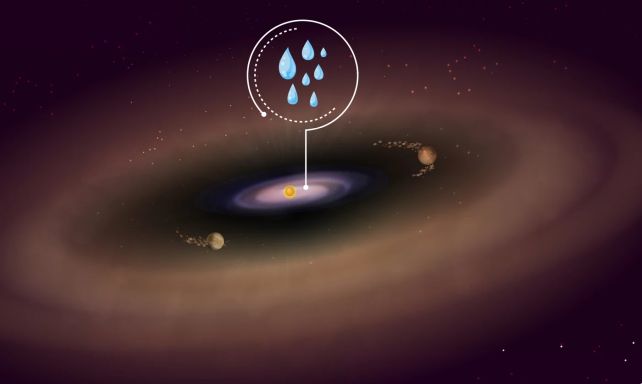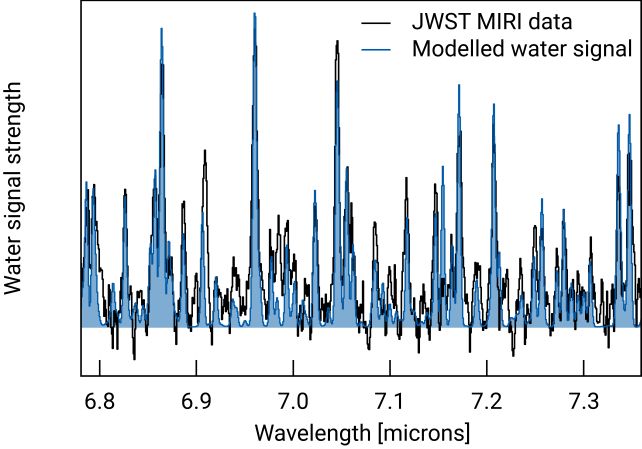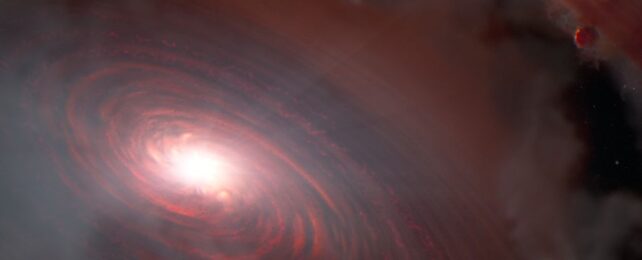One of the most interesting baby planet systems in the Milky Way has just yielded a detection of water vapor.
And not just anywhere, either. In the extended disk of dust and gas that still clings to the star PDS 70, the James Webb Space Telescope detected the molecular signature of water in the region expected to form Earth-like worlds.
This could help us work out how Earth formed, and where its water came from; but it also is a tantalizing clue about the formation of other potentially habitable worlds out there in the wider galaxy.
"We've seen water in other disks, but not so close in and in a system where planets are currently assembling," says astronomer Giulia Perotti of the Max Planck Institute for Astronomy in Germany.
"We couldn't make this type of measurement before Webb."
Water is essential for life as we know it, but it's not quite clear how Earth got its water.
One popular theory is that it was delivered by water-bearing asteroids smashing into the baby planet, but a recent growing body of evidence suggests that's not the whole story.
Studies of meteorites and Moon dust suggest that water was in the Solar System as Earth was being born, and was incorporated into our home planet's formation.

Understanding where water comes from on a terrestrial-type world is important for assessing the chances of habitability emerging elsewhere in the galaxy, so astronomers are keen to find out how it happens. The discovery also suggests water is present very early on.
"We now may have found evidence water could also serve as one of the initial ingredients of rocky planets and be available at birth," Perotti says.
PDS 70 is a star and baby planetary system, some 370 light-years from Earth, surrounded by a disk of material in which exoplanets are forming.
It's around 5.4 million years old, which means it's relatively old for a protoplanetary disk. In fact, scientists have identified two gas giants orbiting the star, with direct images to boot, in addition to what seems to be a moon-forming disk, and a co-orbital dust cloud.
Because the system is so interesting, Perotti and her colleagues used JWST to take a closer look, to see if they could identify the molecular composition of the disk, down to a regional scale.
It was thought that the inner part of the disk – where rocky planets form – would be relatively dry, due to powerful ultraviolet irradiation and stellar winds. But the spectrum obtained by JWST came up with a perfect match for water vapor.

Where the water comes from is unclear, but there are two options. It could have formed where it is, with the star itself, from a water-rich nebula; or it could have accumulated from the outer regions of the disk.
The copious dust the team found in the inner disk could, the researchers say, have served as a shield that protected it from the star.
"The truth probably lies in a combination of all those options," Perotti says. "Still, it is likely that one mechanism plays a decisive role in sustaining the water reservoir of the PDS 70 disk. The future task will be to find out which one it is."
The research has been published in Nature.
